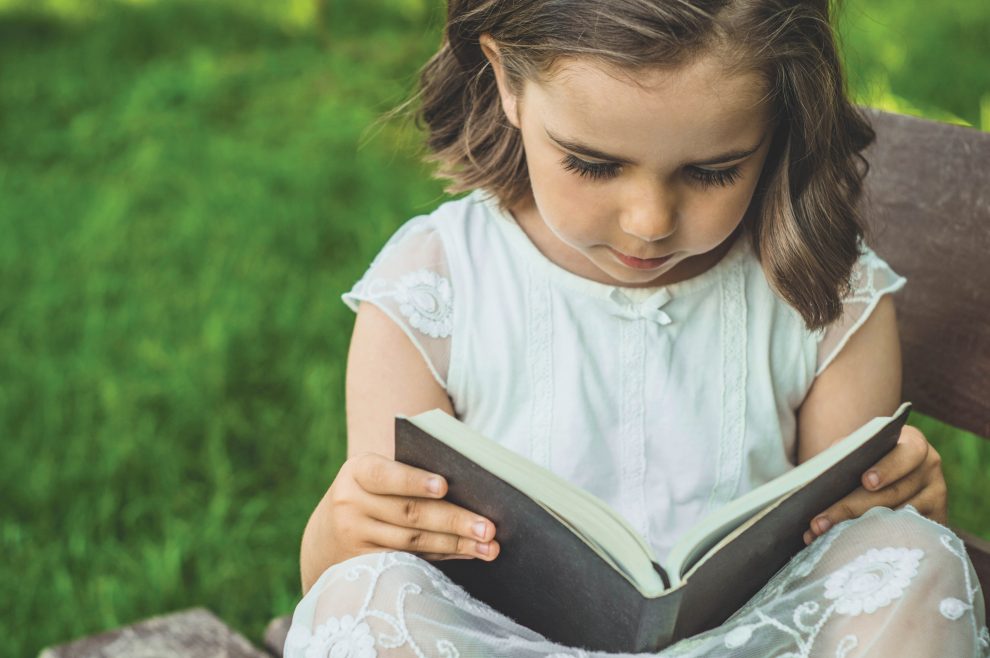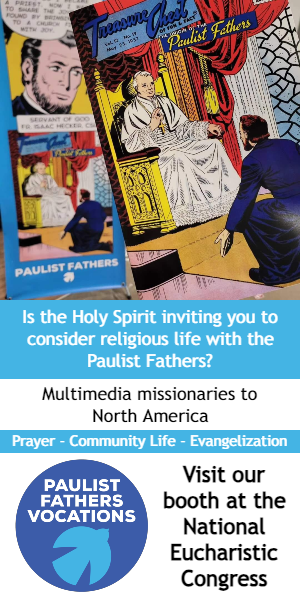About a year ago, I found myself make at a particularly dry point in my personal prayer life. I didn’t make dedicated time for prayer. When I did, I couldn’t concentrate enough to feel any kind of connection. Then, while listening to a Catholic podcast, I was inspired by the perfect gospel passage on which to reflect.
In the Gospel of Mark, Chapter 9, Jesus heals a boy possessed by a demon after his disciples are unable to do so. The boy’s father says, “If you are able to do anything, have pity on us and help us” (Mark 9:22). Jesus scoffs at the man’s use of the word if, telling him that everything is possible to one who has faith. This is when the man utters the quotable line that so often remains my prayerful mantra: “I believe; help my unbelief!” (Mark 9:24).
As a father of three young children, it is both my honor and vocation to pass on the faith. But how am I supposed to do that when I sometimes wrestle with my own demons of doubt? I find the evolving and growing faith of my children—especially my 3-year-old daughter, Maddie—has been a healing balm for helping my unbelief.
The simplest responses—explanations such as ‘We do that because we know God loves us’—often suffice.
As we unlock the traditions, teachings, and trappings of our faith for her, I am forced to provide simplified answers to difficult spiritual questions on which doctors of the church have no doubt spilled gallons of ink. But I find that the simplest responses—explanations such as “We do that because we know God loves us”—often suffice. She might not fully understand the dogmas and doctrines, but she believes with the faith of a child. I’m pretty sure Jesus said something about that.
Although acting as a religion teacher for Maddie has led to the crushing realization that I will never be considered even a nurse of the church, much less a doctor, it has also forced me to confront my own unbelief in a new way. If it’s good enough for Maddie, why can’t it be good enough for me? She reveals the beauty of unflinching faith and makes it seem more attainable.
For more than a year, Maddie has enjoyed reading her now dog-eared copy of The Beginner’s Bible. You’ve surely seen this cartoony take on scripture, which somehow manages to thoroughly hit the highlights of both the Old and New Testaments in a way that doesn’t make parents want to quickly skip over any stories and doesn’t leave a 3-year-old scarred for life. For a while we let her choose three stories to read before bed. She instantly developed several favorites: the Good Samaritan, David and Goliath, the raising of the dead girl and the healing of the bleeding woman, and the entire saga of Joseph and his dreamcoat.
I can’t remember if it was my suggestion or hers, but we eventually decided to read through the entire book together, one story per night. Although many people embark on the journey of reading the entire Bible in a year, we got it done in about two months. We also just happened to reach the passion stories during Holy Week, which gave her a glimpse into what we were celebrating each day.
Unable to physically go to Mass due to the COVID-19 pandemic, we cut out paper palms. She saw The Last Supper hanging in our dining room and made the connection to the story we had recently read, even asking which guy was Judas. Her natural curiosity and somewhat encyclopedic brain help her continue referencing Bible stories whenever she encounters something that reminds her of them.
If it’s good enough for Maddie, why can’t it be good enough for me?
Reading her Bible has also closed a loop for her on some other things we do in terms of prayer. If Jesus is healing people in our bedtime stories, it follows that we would pray for him to heal our family, friends, and situations whenever necessary. Through our simple example of praying at meals and before bed, prayer has become an important and powerful tool in Maddie’s life.
If we forget to pray before dinner, she tends to remind us. Once when we were playing outside, I heard an ambulance and told her that we should stop to pray for whomever was involved. No ambulance has been unprayed-for since. Most recently, she stunned me with the following exchange upon hearing a fire truck in the distance.
Maddie: Let’s pray for that ambulance!
Me: Good idea!
Maddie: Can I lead?
Me: Oh! Sure . . .
Maddie: Dear God, please help whoever that ambulance is going to help and please help all the firemen and doctors and nurses that are helping. And please bless everyone else who is sick and let them know that you are with them.
Even if these are just words that she doesn’t fully grasp on a practical level, she clearly believes in what she is saying, understands enough to formulate the sentiment, and finds inherent value in the act of praying.
The steadfast faith of my 3-year-old has made God more visible to me now than ever.
As the global pandemic took hold in the United States, prayer helped Maddie process her feelings on “the sickness” and seemed to at least give her a mental modicum of control or reassurance, much like any faithful adult. When she began to comprehend that preschool was cancelled and we wouldn’t be going to Grandma’s house, or really anywhere else, for the foreseeable future, her first response was, “Maybe we can ask God why everything is cancelled.” Praying at bedtime later that night for those who are sick and those who take care of them, she whispered to herself, “I don’t understand.” When pressed to continue, she said, “I don’t understand. . . . We can ask God to do that, but we can’t see him.”
Ironically, the steadfast faith of my 3-year-old has made God more visible to me now than ever. The way Maddie accepts the counterintuitive knowledge that God exists even when God can’t be seen and that we can call upon God to comfort the afflicted is both enviable and instructional.
This is the faith to which we are called: believing without seeing and trusting in the power and plans of the Lord, even when our lack of understanding can make us feel like children ourselves. Maybe that’s exactly how we should strive to feel. Maybe it takes the faith of a child to remind us that we do believe—and to help our unbelief.
This article also appears in the September issue of U.S. Catholic (Vol. 85, No. 9, pages 43-44). Click here to subscribe to the magazine.
Image: iStock
















Add comment